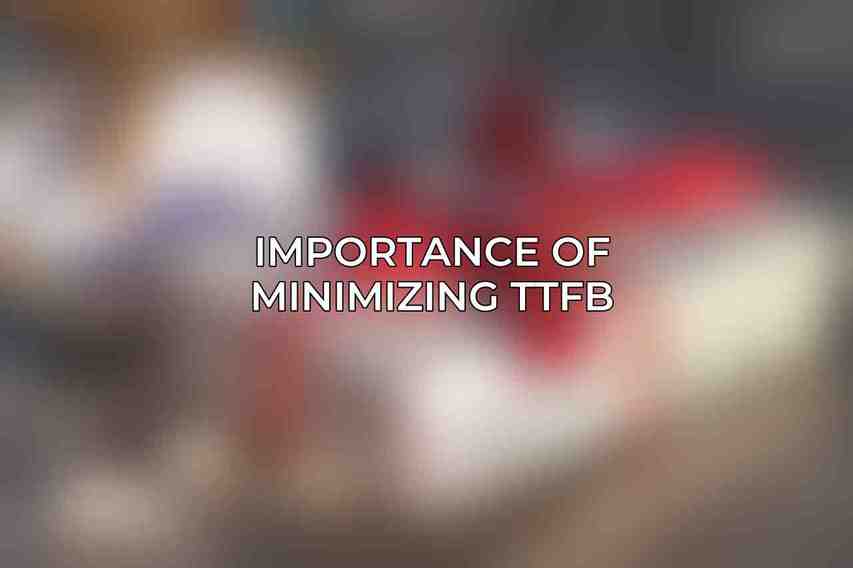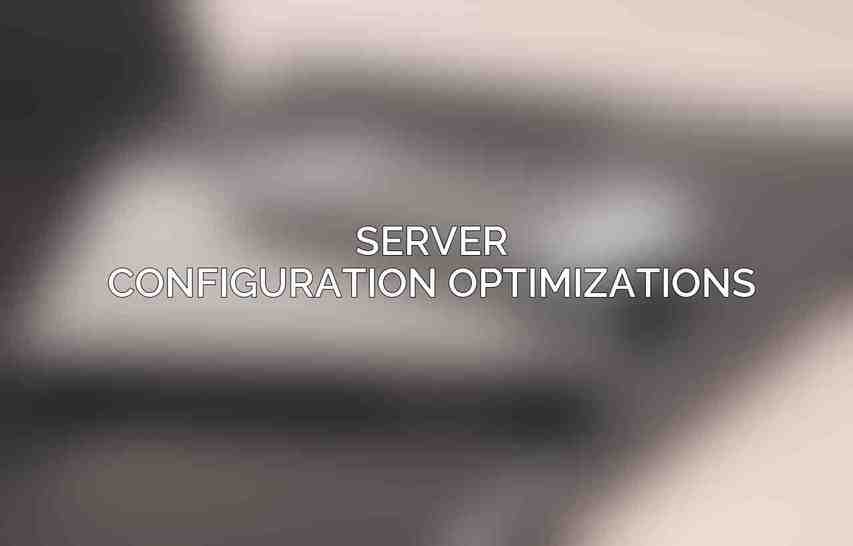When it comes to web performance optimization, Time to First Byte (TTFB) plays a crucial role in determining the speed at which your website loads for visitors. TTFB refers to the time taken from when a user makes a request to when the first byte of data is received from the server. This metric is essential in evaluating the responsiveness and efficiency of your website’s server.
Minimizing TTFB is vital for enhancing user experience and search engine rankings. A fast TTFB ensures that visitors receive content quickly, leading to better engagement and higher conversion rates. Additionally, search engines like Google consider TTFB as a factor in determining website rankings, making it imperative for businesses to optimize this aspect of their site.
Importance of minimizing TTFB

Reducing TTFB offers several benefits, including:
- Improved user experience: Faster TTFB leads to quicker load times, keeping visitors engaged and satisfied.
- SEO enhancement: Search engines prioritize websites with fast TTFB, potentially boosting your site’s rankings.
- Higher conversion rates: Speedier TTFB contributes to increased conversions and overall business success.
- Competitive advantage: Outperforming competitors in terms of site speed can set you apart in the digital world.
Identifying TTFB Bottlenecks

To address TTFB issues effectively, it is crucial to identify the specific bottlenecks causing delays in server response times. Utilizing web performance tools like Google PageSpeed Insights and GTmetrix can provide detailed insights into your website’s performance metrics. Analyzing server logs and inspecting network traffic also help pinpoint potential areas for improvement.
Using web performance tools
Tools like Google PageSpeed Insights analyze your site’s content and suggest optimizations to enhance speed and performance. GTmetrix offers in-depth reports on various performance aspects, highlighting TTFB and other key metrics for better understanding and optimization.
By examining server logs, you can identify patterns in server responses and detect any anomalies that may be causing delays in TTFB. Inspecting network traffic helps reveal how data flows between the server and client, shedding light on any congestion points or inefficiencies impacting TTFB.
Server Configuration Optimizations

Optimizing server configurations is essential for reducing TTFB and ensuring swift responses to user requests. By implementing the following server optimizations, you can enhance your website’s performance significantly.
Server software optimization
Updating your web server software to the latest version ensures you have access to performance improvements and security enhancements. Optimizing server settings for HTTP/2 and TLS protocols enables faster data transmission and secure connections, further reducing TTFB.
Caching and compression
Implementing HTTP caching mechanisms, such as utilizing a Content Delivery Network (CDN) and enabling browser caching, helps store and deliver frequently accessed resources more efficiently. GZIP compression reduces the size of data transferred between the server and client, speeding up response times.
Database optimization
Optimizing database queries and employing a database cache can minimize the time required to fetch and deliver dynamic content, thereby improving TTFB. By fine-tuning database operations, you can streamline data retrieval processes and enhance overall website performance.
Hardware upgrades
Investing in hardware upgrades like increasing server RAM and transitioning to a Solid-State Drive (SSD) can significantly boost server processing speeds and reduce TTFB. These enhancements provide faster data access and improved server responsiveness for better user experiences.
Frequently Asked Questions
What is Time to First Byte (TTFB)?
Time to First Byte (TTFB) measures the time it takes for a browser to receive the first byte of data from a web server when someone tries to visit a website.
Why is TTFB important for website performance?
TTFB is important because it directly impacts user experience. A faster TTFB means your website will load quicker, resulting in better user satisfaction and potentially higher search engine rankings.
How can I check my website’s TTFB?
There are various online tools like GTmetrix, WebPageTest, or Google PageSpeed Insights that can help you analyze your website’s TTFB and provide recommendations for improvement.
What are some common factors that can affect TTFB?
Factors such as server response time, location of server, amount of traffic, website resources (images, scripts), and server configuration can all impact TTFB.
What are some tips to improve TTFB for my website?
Optimizing server performance, using a content delivery network (CDN), reducing the size of images and scripts, enabling caching, and minimizing HTTP requests are all effective ways to improve TTFB for your website.

